How to Discipline a 3-Year-Old – The Ultimate Guide
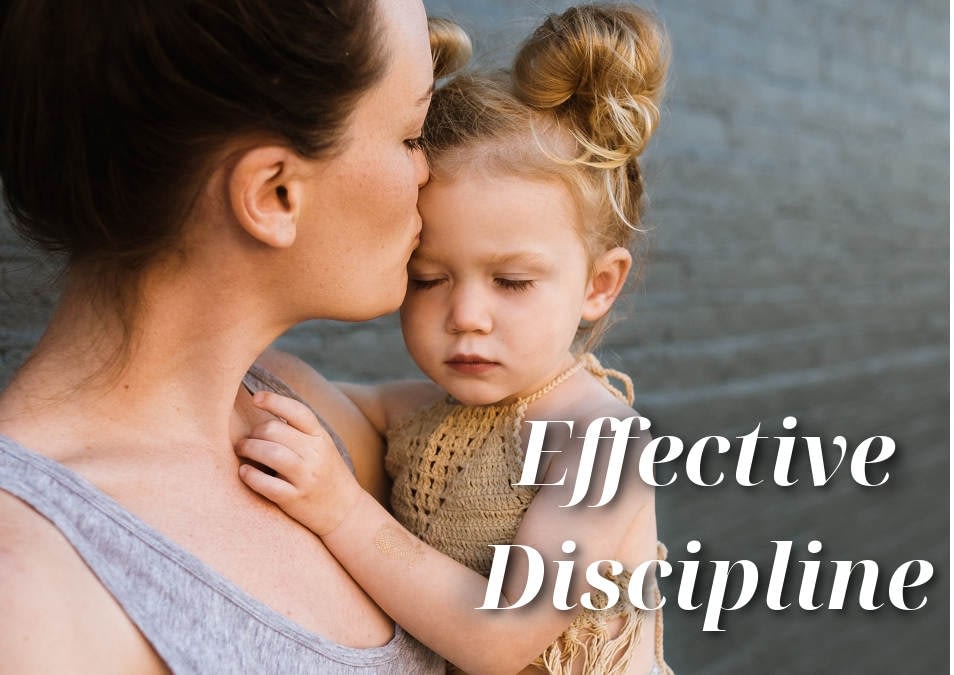
Discipline is scary. Even the word is scary. It evokes visions in my mind of being shouted at, spanked as a child, and hurt feelings.
But discipline doesn’t have to be like that.
Positive, fair, and effective discipline is the structure that will help your child fit into the world and allow them to live a happy and successful life. The original meaning of the word discipline was to train or instruct. The discipline they receive while 3-years-old is the foundation for the development of their own self-discipline. Effective and positive discipline is about guiding your child. Not having your 3-year-old obey everything you say.
Every time you want to bring to attention to your child’s negative behavior. You want to make sure it is done with love and support at its heart. You need to build on the trust between you and your child.
If you use discipline with trust and love at its heart. Your 3-year-old will learn to thrive and your relationship will be closer than ever before.
Let me show you how…
HOW TO DISCIPLINE A 3-YEAR-OLD — AT A GLANCE
- Set out house rules and your discipline method beforehand: Make sure everyone knows them.
- Be tolerant: Kids will be kids. Don’t be too harsh. Discipline only when you need to.
- Kids will test boundaries: Don’t be surprised if your child repeatedly tests boundaries. Be consistent.
- Discipline is needed: You can’t do without it.
- Remove them from the problem: Take them away from whatever is causing the problem. See if that solves the issue.
- Divert their attention
- If they have a tantrum: See my complete tantrum guide.
- Use a Timeout.
- Use Reasoning: Away from the incident.
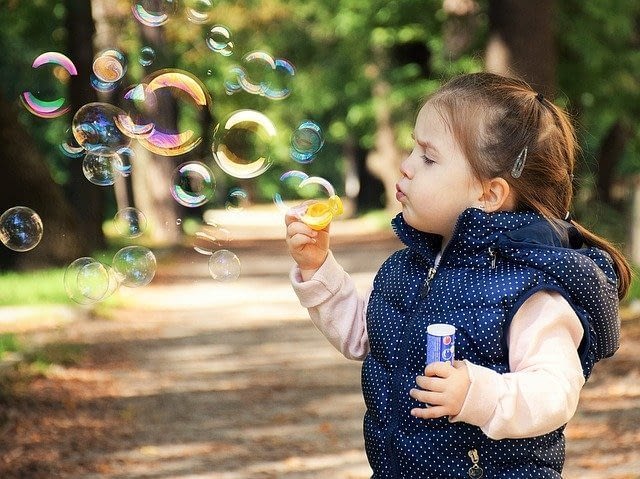
but first …A WORD ON WHY YOU NEED TO USE POSITIVE DISCIPLINE
The word discipline might make you think of heavy-handed methods, like spanking or shouting. But you should try to see discipline in a more positive way.
Part of the actual meaning of the word discipline is to train or instruct. You are using positive discipline to train your 3-year-old to live happily and successfully as an adult in society.
Positive discipline is hard work. It takes more time and effort.
There are no quick fixes or tricks. The journey is hard but important to set their personality on the right path, especially at 3-years-old.
At this age, their personality is forming. You want their personality to be honest, well mannered, calm, etc. There are plenty of positive traits you would like for your child. You need to organize your approach to discipline now and get them on the right track.
So how do I use positive discipline to help raise my child into an adult that will find success in life?
You might be confused about how to give your child effective boundaries that work? Maybe, you would like to see your 3-year-old use some self-control?
I have traveled this long and hard road already with my children and I will tell you the most effective methods that have worked for me and will work for you.
Following the method that I will tell you about soon should improve the relationship with your 3-year-old and dramatically reduce their problem behavior. At the same time keeping the love and trust between you both.
The results you get can be life-changing, as they have been for me.
HOW TO DISCIPLINE YOUR 3 YEAR OLD THE EASY WAY – STEP BY STEP
After looking at the latest research and trying lots of new methods myself. I have collected together the most effective and useful forms of discipline for your 3-year-old that worked for my family.
I found these methods amazingly effective and they are based on real research. They need time and dedication at first, nothing worth doing works immediately but these methods are the best tools you have to help guide your children. Soon you could be enjoying a happier and healthier relationship with your 3-year-old.
Effective discipline is discipline applied with a mutual respect and trust. Applied in a firm, fair and consistent way.
MacMillan et al.

In this section, I will give you an in-depth guide of exactly how I discipline my 3-year-olds. All my methods are from evidence-based research (See the references) and I think, from my experience, it is the best way for you to discipline your child too.
These methods have been a massive success for me and my kids. My children better now than they used to be. The steps below include planning your approach to discipline, then walk you through the exact step by step method that I actually use myself.
It really works. Just stick to the plan and be consistent.
STEP 1: THE PLAN
1. PLAN YOUR APPROACH: You need to plan the way you will handle discipline in your home with all your family. What we did was gather everyone around the table and all decide on rules that everyone should follow around the house, together. Some examples of our rules were:
- No hitting
- No shouting
- Share with each other
- Be honest
- The list went on…
We kept our rules them fair but simple, so our 3-year-olds could understand them. When you involve your children in the decision making and make the rules apply to everyone in the house you gain their trust and show them that the rules are fair.
I then posted a copy of the rules on the fridge.
You should make sure that your 3-year-old knows that the rules are there to make sure everyone is happy and safe from danger. Not to punish people when they do something wrong.
2. BE TOLERANT: At 3-years-old, your child hasn’t developed an effective way of dealing with frustration. They are still learning. Sometimes, when they are frustrated or angry. They don’t know how to fully express themselves, because they lack the correct words.
Sometimes their behavior can look very negative or aggressive, but it could be frustration coming out in a different way. Try and talk to them first, listen to what they have to say, and approach them softly. Give them the chance to see that the way they are acting isn’t acceptable. Do this before you use other methods of discipline.
3. TESTING BOUNDARIES: 3-year-olds love nothing more than testing boundaries. Boundaries are acceptable limits of behavior. Kids have no idea what these limits are. So they look to you for guidance.
For example, they might hit out to see what happens and how you react to it. Even after being told multiple times that hitting is wrong. You might find your 3-year-old carrying on repeating hitting. If that happens, don’t panic, they are just testing their boundaries.
Carry on telling them what behavior is acceptable and what isn’t, keep reinforcing those boundaries. Problem behavior will eventually reduce. Guiding your child by reinforcing boundaries takes time.
4. DISCIPLINE IS NEEDED: You might feel that discipline is cruel. Maybe your own parents used discipline that was too strict or harsh. You might be tempted not to use discipline for your child. What’s the harm in just giving them what they want if it calms them down? Just this once?
I’ve found with my children, and the research suggests that the reluctance to use discipline consistently will make their behavior worse. Toddlers need discipline, it keeps them safe, limits destructive behavior and reduces aggression3. Your 3-year-old needs consistency in the rules for their everyday life.
When they grow up and become adults, they will thrive in society. Because they will have learned all the social boundaries they needed to become successful.
5. STOP NEGATIVE BEHAVIOR BEFORE IT STARTS: As I suggested in the first point. Set simple family house rules. Involve your 3-year-old and make sure they know everyone has to follow them. This has the added benefit of stopping some negative behavior before it becomes an issue.
Our children know the rules and consequences and are reminded of them by the list of house rules on our fridge. This should make them think twice as they know the consequences if they break them. Set rules give your 3-year-old a sense of structure and consistency in the way you deal with negative behavior. This kind of consistency will allow them to feel secure and happy.
STEP 2: A SECOND CHANCE
6. REMOVE THEM FROM THE PROBLEM: If your child has done something that they need discipline for. You should first remove them from the situation or remove the object that caused the issue.
Then, tell them firmly “No”. You might want to include a simple explanation. For example, “No, dangerous”. Keep any explanation brief. 3-year-olds will not be able to listen to or understand lengthy explanations when they are angry or frustrated. Just be firm and to the point.
7. DIVERT THEIR ATTENTION: Try to divert their attention to another activity. Ideally in another room or area. This will take their mind off the problem that got them into trouble. If you don’t try and divert their attention. They are likely to perform the same negative behavior again.
8. IF THEY START TO HAVE A TANTRUM: Tantrums thrive on attention, so remove the attention they are after by ignoring them. Make sure they are safe and supervise them, but don’t discuss the issue with them further until they have calmed down.
When a child is having a tantrum, they can’t be reasoned with, so don’t try. Tantrums feed on attention. By removing your attention, you are making sure the tantrum is as short as possible. Read my full step by step guide I wrote about dealing with your 3 year old’s tantrums.
STEP 3: USING A TIMEOUT
Time-out is one of the most effective disciplinary techniques available to parents of young children, aged two years through primary school years
– ER Christopherson1.
If your 3-year-old is still showing negative behavior — even after being given another chance to correct it. Then this is the time to use a timeout. The research suggests that the timeout is the most effective and safest form of discipline for your 3-year-old.
I will teach you how I use timeouts in the correct way, the method advised by child behavior experts3. I have found timeouts to be very effective for my 3-year-olds. If you use them correctly. If you do them the wrong way, you will not have great results. Let me show you how timeouts can gently guide your little ones on the right path when they have negative behavior.
WHY ARE TIMEOUTS SO EFFECTIVE FOR 3-YEAR-OLDS?
You will find timeouts are the best form of discipline for a 3-year-old’s because:
- Timeouts take away the reinforcement of negative behavior. They reinforce that being good gets them positive attention. In their “time in”.
- When used correctly and not too often, they are very effective at reducing negative behavior.
- Easy to learn how to use.
- They aren’t stressful or harmful for your child and don’t come with any negative effects if used correctly.
THE BEST WAY TO USE TIMEOUTS FOR A 3 YEAR OLD
- Timeouts should be 1 minute per year of age. So, for example, a three year old should be in timeout for 3 minutes. In later years, timeouts should last no longer than 5 minutes maximum.
- Timeouts should have no built-in rewards, like toys or in a room with a TV, etc.
- Connect the timeout to the negative behavior before your 3-year-old has their timeout. So if your 3-year-old has hit another child and needs a timeout. Then say “No hitting others”. Do not discuss it any further at that time.
- Do not lecture your child or discuss the incident when they are in the timeout. You should remove any attention to them.
- You should keep time. You can use a kitchen timer or a clock on the wall.
- Make sure they are within eyesight. This is mainly for safety reasons. Also, abandonment fears are strong at the age of 3. Even timeouts in different rooms can be too stressful for your 3-year-old.
- Do not use shame, guilt or humiliation. It will damage their self-esteem and the trust you have built up together.
- Use timeouts unemotionally and consistently. You don’t want to let them know you are angry or frustrated even if that’s how you feel. It will only make the situation worse. Make sure you are using timeouts consistently if they are needed. Using it one day and skipping a timeout the next day for the same behavior, will make timeouts less effective.
- When the timeout has finished. Offer a new activity. Do not discuss behavior. Just move on. You can discuss behavior away from these times.
Important things to remember with timeouts:
- Timeouts may not get rid of the unwanted behavior completely. But they should, if used correctly, reduce that negative behavior.
- Some children’s timeouts may need to be less time than their age in minutes. If your child is becoming more frustrated towards the end of their timeout. Experiment with reducing the length slightly.
TIME-OUTS VS TIME-IN
If you are using timeouts, you have to make sure that their “time in” is full of good attention. Think, fun activities, reading with them, hugs, days out, sports and games. Timeouts only work if your 3 year old misses their “time in” with you.
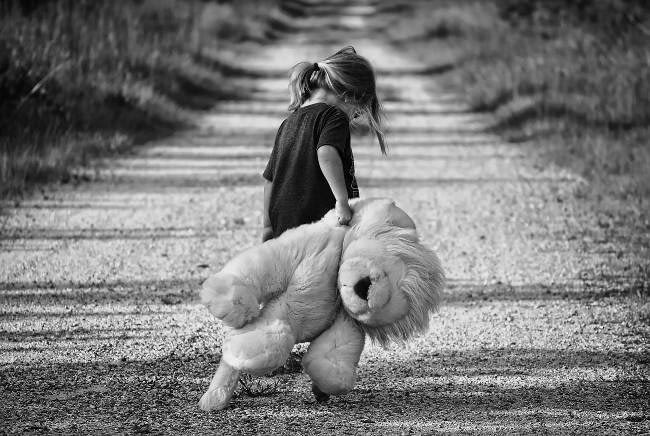
HOW TO REASON WITH YOUR 3-YEAR-OLD | AFTER THEY CALM DOWN
If you are using timeouts effectively. You should also consider using a way to reason with your child2. This should be done away from the time that negative behavior has happened. I have found that using timeouts when their behavior is challenging. Then using reasoning with them at a later point about frustrations or problems that they might have worked very well for me.
Reasoning is simply the discussion you have with your 3-year-old about their negative behavior and how to avoid it in the future. It is not a lecture but a two-way conversation. Make sure you listen to their point of view.
The best ways to reason with your 3-year-old are:
- ANTICIPATE ISSUES: The ultimate form of discipline, although not always possible. Is to tackle behavior problems before they happen using reasoning. Discuss them with your child. Try to anticipate the issues that they might have in the future.
- TEACH POSITIVE BEHAVIOR OVER PUNISHING BAD BEHAVIOR: It is more effective to concentrate on positive behavior and praise than on punishing bad behavior. Everyone likes to be praised and nobody likes to be told off. Use that to your advantage.
- DON’T REASON WITH THEM IN THE HEAT OF THE MOMENT: Timeouts are effective when your 3-year-old is upset and has unacceptable behavior. It gives them time and space to calm down. When negative behavior happens, emotions are running high for both of you. This is not the time to start trying to reason with your 3-year-old. Save it for later.
- 3-YEAR-OLDS WILL LISTEN TO REASON: At 2 years old, your little one was incapable of really understanding reasoning. At 3 years old their development gives them this new skill. It’s the perfect time to start using it.
SHOULD I SPANK MY 3-YEAR-OLD?
No, you should never use physical punishment, let me explain why.
I know what most of you might be thinking. I used to think the same. “I was spanked by my parents, it didn’t do me any harm!” I believed the same thing. Unfortunately, medical research tells a different story.
A study found that the more a child was spanked or slapped in their younger years. The more likely they were to suffer from the following negative issues in their adult life5:
- Depression.
- Anxiety.
- Alcohol abuse.
- Externalizing problems (Bottling up emotions).
Thankfully, we don’t need spanking anymore. We have more effective and safer methods. These new methods like timeouts and reasoning don’t carry the possible negative effects that spanking has on your child’s adult life.
I tell my children not to hit others. So I don’t want to break that same rule. It just isn’t consistent with who we are as a family. Physically harming children is unacceptable. It means that you have, at that moment, lost control. It is dangerous and as the research suggests. It could harm their future happiness.
LOSING CONTROL
If you feel like you are beginning to lose control. It is better to take some time out away from the child. Make sure they are safe. Then leave the room for a period to allow yourself to calm down. That is a much better option than losing your temper.
OTHER HARMFUL TYPES OF DISCIPLINE FOR 3-YEAR-OLDS YOU SHOULD AVOID
The foundation of discipline is respect. Your child needs to respect you as a parent and others around them. Harsh discipline will make it hard for your child to respect and trust you.
Spanking is one of the main types of discipline that is now considered harmful and old fashioned. There are other types that are just as counterproductive. It may feel like you are helping to teach your 3-year-old a lesson, and maybe it was the way you were brought up too. But these methods have been proven to be ineffective and in some cases harmful to your child5.
- SHOUTING: You might raise your voice out of frustration. I know I do sometimes. But it is good to remind yourself that nobody listened to you more just because you said it louder. Shouting is more likely to make the situation worse.
- PHYSICAL HITTING (like spanking): As I have already explained. This used to be common. But now we know it has negative life long effects. You also have other more effective discipline methods like timeouts. So thankfully physical punishment is not as popular anymore.
- HUMILIATION: Discipline is the foundation for your child’s self-discipline. Your child can gain self-esteem from self-discipline. Humiliation can tear down your child’s self-esteem and trust in you, which is far from ideal.
- OTHER VERBAL ABUSE: Like physical abuse, this is normally done out of frustration. You may lose your temper. As parents, we are likely to lose our temper and say things we don’t mean. The important thing is to apologize if you have. Or even better, walk away from the situation for a few moments if your child is in a safe place. Before you lose control.
THIS IS THE NO.1 PROBLEM YOU WILL FACE TO MAINTAIN GOOD DISCIPLINE
Now, you know the most effective way to discipline your 3-year-old and have all the information in a step by step guide on just how to do it. But what is the most common way that parents fail at good effective discipline?
CONSISTENCY
To make sure you have good disciplinary consistency. Follow these guidelines:
- INCONSISTENCY: Is confusing for your child. They like structure and predictability. Their world is complex. It makes it even harder for them to understand important lessons and your guidance if the rules keep changing.
- ROLE MODELS: I know I find it hard to be the perfect role model for my child. You have to keep it up all the time. Because they always watching and learning. Consistency is important in your everyday actions. Nobody is perfect but try your best. Being consistent has made me a better person overall.
- DO AS I SAY, NOT AS I DO: This never works. Your 3 year old uses you as a role model. They will copy anything you do. So make sure you are the person you would want them to become.
- DISAGREEMENTS ON HOW TO RAISE YOUR CHILD: You and your partner will have differences in the way you want to bring up your children. It’s only natural. The problem can arise because if you both try to use your own methods. That will create inconsistency and confusion for your 3-year-old. The solution is to sit down and discuss and compromise with each other. Then you can set out one clear way of bringing up your child.
- DECIDE ON DISCIPLINE AS A FAMILY: Get the family around the table. Let everyone have input in the house rules. Then let everyone decide what forms of discipline are acceptable if you break those rules. That way everyone feels listened too and included. That makes discipline fair.
- INCLUDE YOURSELF Everyone has to follow the rules, even you! You are their role model. It gives your child trust in you and they are more likely to follow the rules themselves.
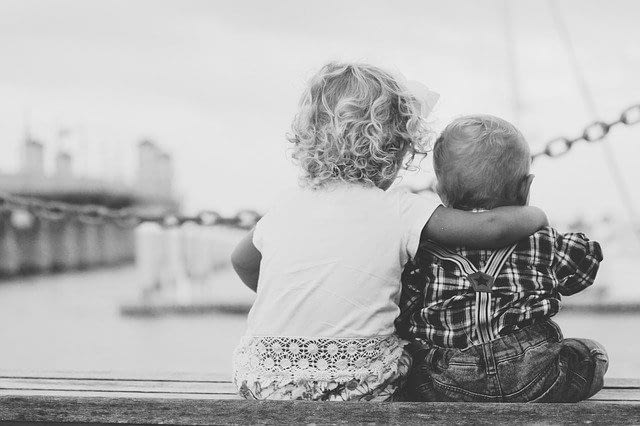
THE POSITIVE OUTCOMES OF GOOD DISCIPLINE
We have only spoken about the negative side of discipline so far. Discipline has such a positive effect on your child and their future. Your relationship with your child can be greatly improved through good, effective and fair discipline. It is that important. Here are some other ways positive discipline will improve your 3-year-old’s life:
- SUCCESS: Part of being successful in life is having good self-discipline. Good self-discipline comes from structure and guidance when you were growing up. Discipline is an important part of that.
- RESPECT: Effective discipline done fairly, is rooted in respect. It teaches your 3-year-old to respect you, others and themselves.
- CONSCIENCE: Following rules, making mistakes and saying sorry helps develop a healthy conscience in your 3-year-old.
- SAFETY: Rules and discipline protect your 3-year-old from danger. That might be crossing the road now but in the future, it might help them make better life choices.
- SELF-CONTROL: To lead a healthy, happy and successful life. We all need good self-control. Discipline helps develop your 3-year-old’s self-control.
- ENDURE DISCOMFORT: Discipline helps your child deal with mild discomfort. It is an important skill. Life isn’t always roses and I want my little one to prepare for it.
- EMOTIONAL MATURITY: Discipline allows your 3-year-old to develop their emotional maturity. They can’t always act like a baby. They need to take responsibility for their actions.
- LESS IMPULSIVE: Successful people are less impulsive. They think about their actions before they do them. Because they know that actions have consequences.
CONCLUSION
Bringing up your 3-year-old with good discipline is very important. I hope this article has given you the tools to ensure that your child develops a strong and loving character.
Discipline is a learning experience for children and parents when the consequences are minor. In their adult life, if they make the wrong choices and act in an unacceptable way, the consequences will be more severe. It’s better if they learn now. So when they are older and they trip up and fail it will be much easier for them to get back on their feet.
It is about changing behavior and not punishing children
Paediatric Child Health3.
Discipline is about guidance. If done correctly it leads to building their own self-discipline. It allows them to become emotionally mature adults with good social skills. I have given you the best method of effective discipline for your 3-year-old and I have steered you clear of the obvious problems that too many people have with disciplining their children.
I hope it improves your relationship with your 3-year-old as much as it has mine.
Be consistent in the way you discipline your children. Also, be a good role model for your 3-year-old
Always remember to never remove love from your discipline.
P.s. Tantrums can be difficult to deal with so go ahead and read my article on the Complete Guide to Taming Your 3 Year Old’s Tantrums. I think you will find it very useful!
REFERENCES
1. Christopherson ER. Discipline. Pediatr Clin North Am. 1992 Jun;39(3):395-411.
2. Nathan J. Blum, George E. Williams, Patrick C. Friman, Edward R. Christophersen. Disciplining Young Children: The Role of Verbal Instructions and Reasoning. Pediatrics Aug 1995, 96 (2) 336-341;
3. Effective discipline for children. Paediatr Child Health. 2004;9(1):37-50.
4. Howard BJ. Discipline in early childhood. Pediatr Clin North Am. 1991;38:1351–69.
5. MacMillan HL, Boyle MH, Wong MY, Duku EK, Flemming JE, Walsh A. Slapping and spanking in childhood and its association with a lifetime prevalence of psychiatric disorders. CMAJ. 1999
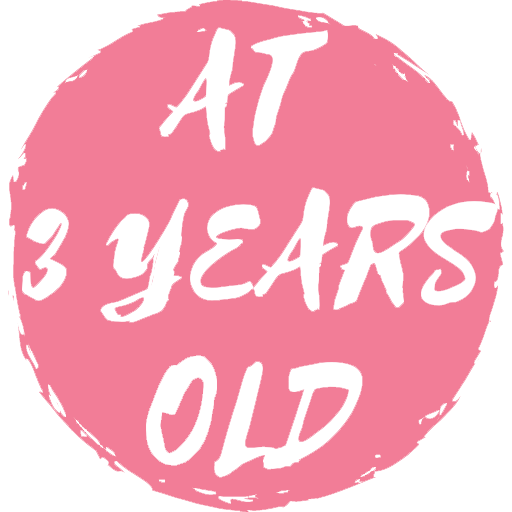
Leave a Reply